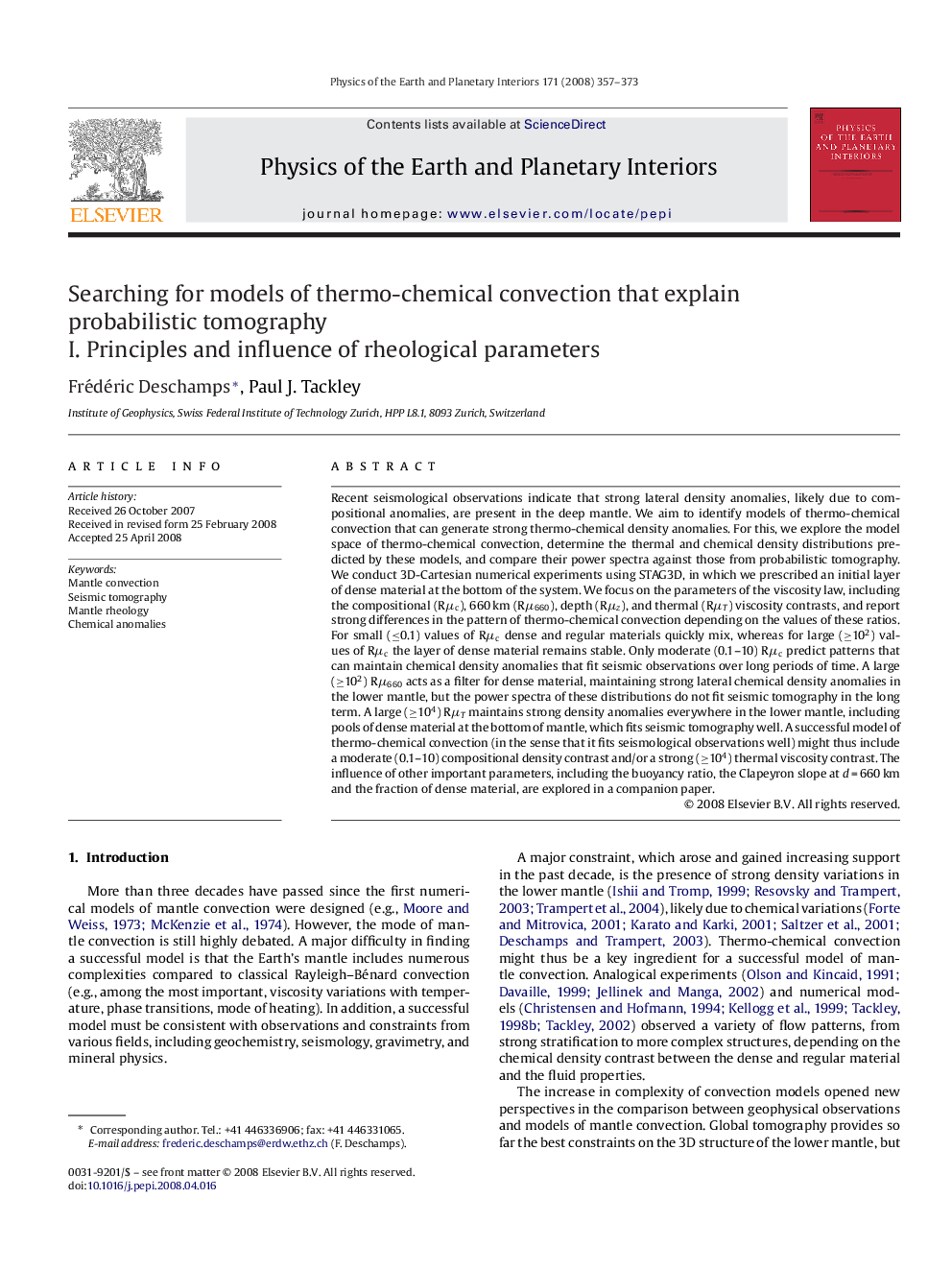| کد مقاله | کد نشریه | سال انتشار | مقاله انگلیسی | نسخه تمام متن |
|---|---|---|---|---|
| 4742328 | 1641575 | 2008 | 17 صفحه PDF | دانلود رایگان |

Recent seismological observations indicate that strong lateral density anomalies, likely due to compositional anomalies, are present in the deep mantle. We aim to identify models of thermo-chemical convection that can generate strong thermo-chemical density anomalies. For this, we explore the model space of thermo-chemical convection, determine the thermal and chemical density distributions predicted by these models, and compare their power spectra against those from probabilistic tomography. We conduct 3D-Cartesian numerical experiments using STAG3D, in which we prescribed an initial layer of dense material at the bottom of the system. We focus on the parameters of the viscosity law, including the compositional (Rμc), 660 km (Rμ660), depth (Rμz), and thermal (RμT) viscosity contrasts, and report strong differences in the pattern of thermo-chemical convection depending on the values of these ratios. For small (≤0.1) values of Rμc dense and regular materials quickly mix, whereas for large (≥102) values of Rμc the layer of dense material remains stable. Only moderate (0.1–10) Rμc predict patterns that can maintain chemical density anomalies that fit seismic observations over long periods of time. A large (≥102) Rμ660 acts as a filter for dense material, maintaining strong lateral chemical density anomalies in the lower mantle, but the power spectra of these distributions do not fit seismic tomography in the long term. A large (≥104) RμT maintains strong density anomalies everywhere in the lower mantle, including pools of dense material at the bottom of mantle, which fits seismic tomography well. A successful model of thermo-chemical convection (in the sense that it fits seismological observations well) might thus include a moderate (0.1–10) compositional density contrast and/or a strong (≥104) thermal viscosity contrast. The influence of other important parameters, including the buoyancy ratio, the Clapeyron slope at d = 660 km and the fraction of dense material, are explored in a companion paper.
Journal: Physics of the Earth and Planetary Interiors - Volume 171, Issues 1–4, December 2008, Pages 357–373